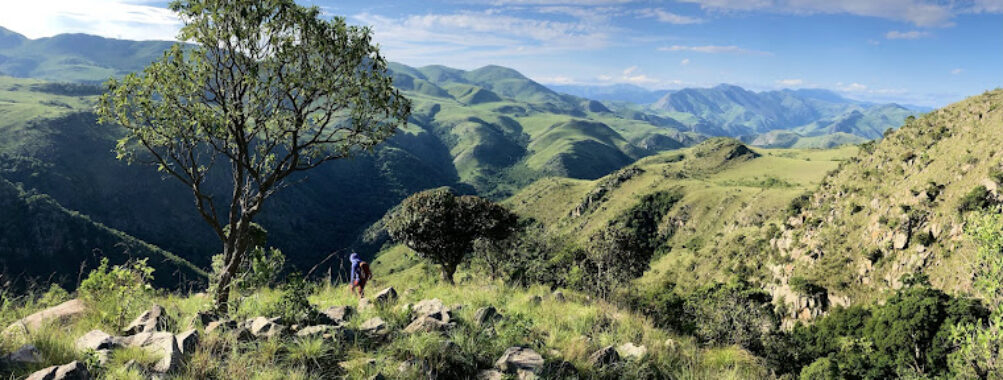
Malolotja National Park
“`html
Table of Contents
Description
Malolotja National Park in Eswatini is one of those places that feels like it was made for people who crave both quiet moments in nature and a bit of adventure on the side. It stretches across 18,000 hectares of rugged highveld terrain, with rolling hills, forested gorges, and the kind of wide-open skies that make you stop mid-step just to take it all in. The park is home to Ngwenya Mountain, the country’s second-highest peak at 1,829 meters, and Malolotja Falls, the tallest waterfall in Eswatini, plunging nearly 90 meters. And honestly, standing near the falls, you can feel the spray on your face and it’s one of those simple but grounding experiences that stick with you.
This park isn’t about manicured lawns or polished tourist centers—it’s about raw, untamed wilderness. That’s both its charm and its challenge. Some people fall in love with the sense of solitude here, while others might find it a little too wild. The facilities are basic but practical: picnic tables, barbecue spots, a playground for kids, and restrooms. There’s even a zipline adventure that takes you soaring across a forested gorge if you’re looking for a thrill. Accessibility is better than you’d expect for such a rugged spot, with wheelchair-friendly entrances and parking. Families with kids will also find plenty to keep little ones occupied, from gentle trails to swings and slides.
For me, what makes Malolotja stand out is the way it feels both vast and intimate. You can hike for hours without seeing another soul, then stumble on a hidden stream or a patch of wildflowers that feels like it’s yours alone. But at the same time, it’s not so remote that you feel cut off—it’s close enough to Mbabane to make it a doable day trip, though honestly, staying overnight in one of the campsites or cabins makes the experience richer.
Key Features
- 18,000 hectares of protected mountain wilderness
- Ngwenya Mountain, Eswatini’s second-highest peak (1,829 m)
- Malolotja Falls, the country’s highest waterfall at nearly 90 m
- Network of hiking trails ranging from easy walks to multi-day treks
- Zipline tours across a dramatic forested gorge
- Camping facilities and rustic cabins for overnight stays
- Accessibility features including wheelchair-friendly parking and entrances
- Family-friendly amenities like picnic areas, swings, and slides
- Rich biodiversity with endemic plants and rare bird species
Best Time to Visit
The park changes its character with the seasons, and that’s part of its appeal. From May to September, the cooler dry season, hiking is at its best. The air is crisp, the skies are clear, and you don’t have to worry too much about sudden thunderstorms. It can get chilly at night, especially if you’re camping, so pack a decent jacket. On the other hand, the summer months from October to March bring lush greenery and wildflowers after the rains. The waterfalls are at their most dramatic then, but trails can be muddy and a little tricky. Personally, I find late April and early May to be the sweet spot—pleasant weather, fewer crowds, and just enough greenery to make the landscape pop.
How to Get There
Malolotja National Park is located in the northwest of Eswatini, close to the border with South Africa. From Mbabane, it’s about a 30-minute drive along the Piggs Peak road, which is scenic in itself—you’ll pass rolling hills and villages that give you a glimpse of local life. The roads are generally in good condition, though if you’re heading into some of the more remote corners of the park, a vehicle with decent clearance is a smart idea. Public transport options are limited, so most visitors either drive themselves or arrange a transfer through a tour operator. If you’re coming from South Africa, the Oshoek border post is the most convenient entry point, and from there it’s a short drive to the reserve.
Tips for Visiting
First off, don’t underestimate the terrain. Even the shorter hikes can feel demanding because of the steep ascents and rocky paths. Good shoes are non-negotiable. Bring plenty of water too—there are streams around, but not all are safe for drinking without purification. If you’re planning to camp, know that nights can get surprisingly cold, even in summer, so pack accordingly.
One thing I’ve learned the hard way: keep an eye on the weather. Storms can roll in quickly, and being caught on an exposed ridge during a thunderstorm is no fun. Always check the forecast before setting out. If you’re traveling with kids, stick to the shorter, marked trails near the entrance—they’re safe, manageable, and still offer great views. And don’t forget to take advantage of the picnic areas; there’s something special about grilling up a meal while looking out over the highveld.
Wildlife here isn’t as concentrated as in some of Africa’s big safari parks, but that’s part of the charm. You might spot antelope grazing quietly in the distance or hear the call of rare birds. For birdwatchers, the park is a bit of a hidden gem. And if you’re into photography, bring extra batteries—you’ll use them. The light at sunset over the hills is something you’ll want to capture again and again.
Lastly, go in with the right mindset. Malolotja isn’t about luxury lodges or curated experiences. It’s about stepping into a landscape that’s raw, sometimes challenging, but incredibly rewarding. If you embrace that, you’ll walk away with stories and memories that feel personal and unique—because no two visits here are ever quite the same.
“`
Location
Places to Stay Near Malolotja National Park
Find and Book a Tour
Explore More Travel Guides
No reviews found! Be the first to review!